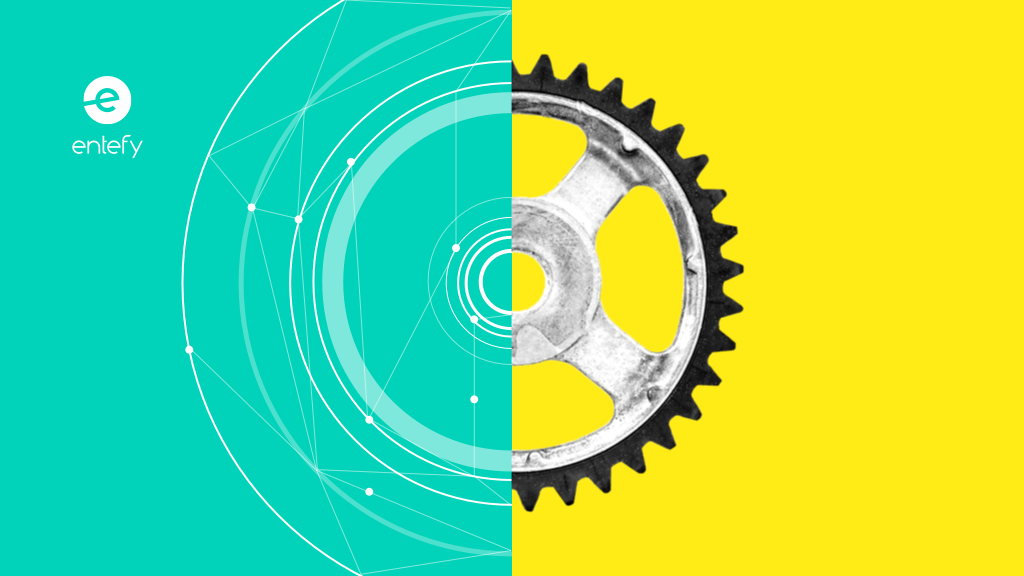Artificial intelligence is shaping the future. Many of the near-term developments are already fairly familiar: self-driving cars, machine-brewed coffee ready before you’re out of bed, and refrigerators that order groceries when you’re running low.
Beyond these personal conveniences, however, AI is already changing the dynamics of entire industries. The details vary from industry to industry, but the overall story remains the same: disruption. Artificial intelligence transforms business-as-usual in ways both straightforward and complex. According to IDC, global spending on cognitive systems is expected to grow to $31 billion in 2019.
Entefy has written about AI in industries as diverse and financial services, education, online dating, and professional sports. But there’s a lot more to say right now about AI’s transformative impact, so we put together this roundup of the most remarkable artificial intelligence advances taking place in 8 major industries.
- Aerospace. AI algorithms enable an entirely new type of self-healing aircraft that makes use of new sensors and other on-board recording devices. Smart systems could use data from these tools to spot problems long before failure occurs, making planes safer, lowering maintenance costs, and reducing the number of delays caused by mechanical issues.
- Defense. The military and intelligence worlds are changing in a big way, with AI increasingly important to national defense strategies, on the ground and online. New AI cybersecurity platforms are being fed massive amounts of user-generated data so they can learn to spot anomalies associated with cyberattacks. In addition to using AI for cyber defense, the U.S. military wants to build autonomous weapons, such as drones that can conduct real-time surveillance of enemy territory, jam communications, and fire against enemy combatants.
- Automotive. Mass adoption of self-driving cars is still some ways off. But AI is already impacting the auto industry in ways that weren’t possible just a few years ago. A new generation of smart features such as accident avoidance, alerts, and automated braking systems contribute to safer driving conditions for everyone. AI systems are being used to predict mechanical failures as well, employing sensors, apps, and Internet of Things technologies to track performance in individual cars. The data collected triggers alerts to drivers to warn them of potential problems, while manufacturers use the same data to improve production and identify faulty or unreliable parts.
- Consumer Goods & Services. Clothing and cosmetics companies—just to name a few—are using smart algorithms to bring shopping experiences out of department stores and into consumers’ homes. A customer who wants to purchase new make-up need only open an app on her smartphone, and she can “test” a range of product shades to see whether they suit her skin tone. Meanwhile, a person in search of new jeans can pop his measurements and style preferences into a simple interface powered by an online shopping algorithm based on a selected brand’s sizing trends. These experiences are powered by AI technologies such as facial recognition and machine learning systems that use partial or uncertain data to make predictions.
- Energy & Utilities. It’s difficult to find a segment of the energy industry not being impacted by the opportunities and challenges of AI, including renewable energy producers using Big Data to better predict supply and demand as well as traditional utilities rolling out smart electrical grid improvements. AI is helping paint a truer picture of the oil industry as well. Not all oil-producing nations are fully transparent about their supply picture, which creates uncertainties in the commodities markets and volatile oil prices. But a combination of convolutional neural networks, shadow detection, and satellite imaging is shining an AI-powered spotlight on the situation. By analyzing the shadows on oil storage tanks, AI systems can assess how full the containers are and approximate oil supplies in any part of the world, forcing greater transparency on oil-producing nations.
- Manufacturing. Factory productivity doesn’t have to come at the cost of workers’ safety, especially with AI in the mix. Japanese researchers are studying how AI can not only detect defective products and increase quality output, but how it can monitor workers’ physical conditions as well. Fatigue can cause serious mistakes, particularly when a worker is operating heavy machinery. But AI systems can determine when an employee becomes drowsy and needs to be reassigned to a safer task. Greater productivity and better working conditions are a win for everyone.
- Transportation. Self-driving cars get a lot of media attention, but the entire transportation industry is evolving rapidly with AI technologies. One interesting development is the environmental improvements created by AI. The transportation industry accounts for 27% of greenhouse gas emissions in the U.S. When you add up the impact of a cluster of AI-powered autonomous transportation technologies being rolled out for airplanes, cars, trucks, trains, and ships, the potential environmental benefits are significant.
- Logistics. Ever wonder how goods get from their point of manufacture to your local store? That’s the business of the logistics industry, and it too is undergoing major changes via AI technologies, allowing more goods to get to more places more quickly. The recipe for the supply chain of the future mixes autonomous delivery vehicles—cars and trucks, but also container ships and drones—with predicative analysis to reduce transport times and fuel costs. Taken together, moving goods from point A to B can happen autonomously with greater speed and efficiency.
As you’ve seen from the variety of this list, AI is being used to tackle challenges large and small, disrupting industry dynamics like never before.
